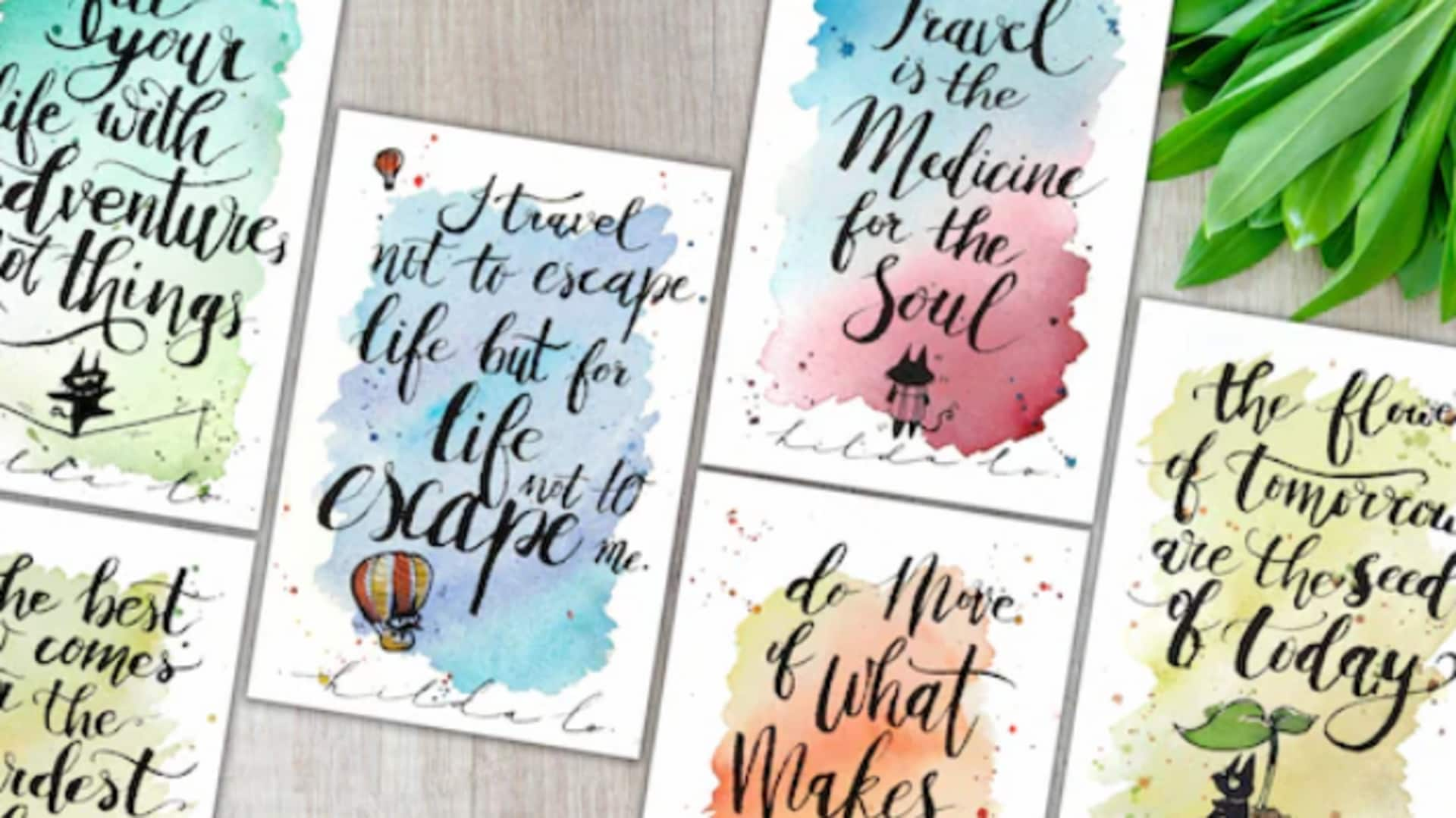
Become a pro at watercolor calligraphy. We tell you how!
What's the story
Watercolor calligraphy combines the flowing beauty of watercolors with the graceful art of calligraphy, resulting in stunning, colorful lettering.
It's gaining popularity for its ability to create unique, personalized pieces of art.
Perfect for both beginners looking to start their artistic journey and seasoned artists seeking to expand their skills, learning this art form is not only fulfilling but also therapeutic.
It caters to a wide variety of artistic tastes.
Tools
Choosing the right tools
The key to mastering watercolor calligraphy lies in choosing the right tools.
A good watercolor set, a pointed dip pen, and smooth, thick paper are crucial.
Watercolors are available in tubes and pans; pans are more beginner-friendly.
Choose paper that's at least 140 lb (300 gsm) to avoid warping when wet.
Remember, investing in quality tools makes a world of difference in your final artwork.
Basics
Learning basic strokes
Before you jump into forming letters, it's important to practice basic strokes.
These include upward thin strokes and downward thick strokes, which are the building blocks for creating letters.
Holding the pen at a 45-degree angle helps you achieve the thick and thin line variation.
Regular practice with these strokes will help build muscle memory and control over the brush pen, providing a strong foundation for more complex letter forms.
Color theory
Understanding color theory
Color theory is crucial in watercolor calligraphy. Understanding how colors behave on paper and how they mix is key to creating beautiful art.
Try blending different colors on a separate piece of paper before applying them to your final piece.
Knowing primary, secondary, and tertiary colors will help you create a balanced color palette for your projects.
Techniques
Experimenting with techniques
Play with ombre effects, blending, and splattering in watercolor calligraphy for texture and fun.
Ombre is achieved by gradually transitioning colors from dark to light or mixing two colors on the letters.
Splattering creates abstract effects by flicking paint-loaded brushes onto the paper, adding a unique touch to your work.
Practice
Practicing regularly
Like any other skill, the secret to mastering watercolor calligraphy lies in consistent practice.
Carve out a specific time each day or week that is solely dedicated to honing this art form.
Begin by emulating alphabets and simple words. As your confidence grows, progress to phrases and sentences.
With time and practice, you'll not only improve your technique but also cultivate your unique style.